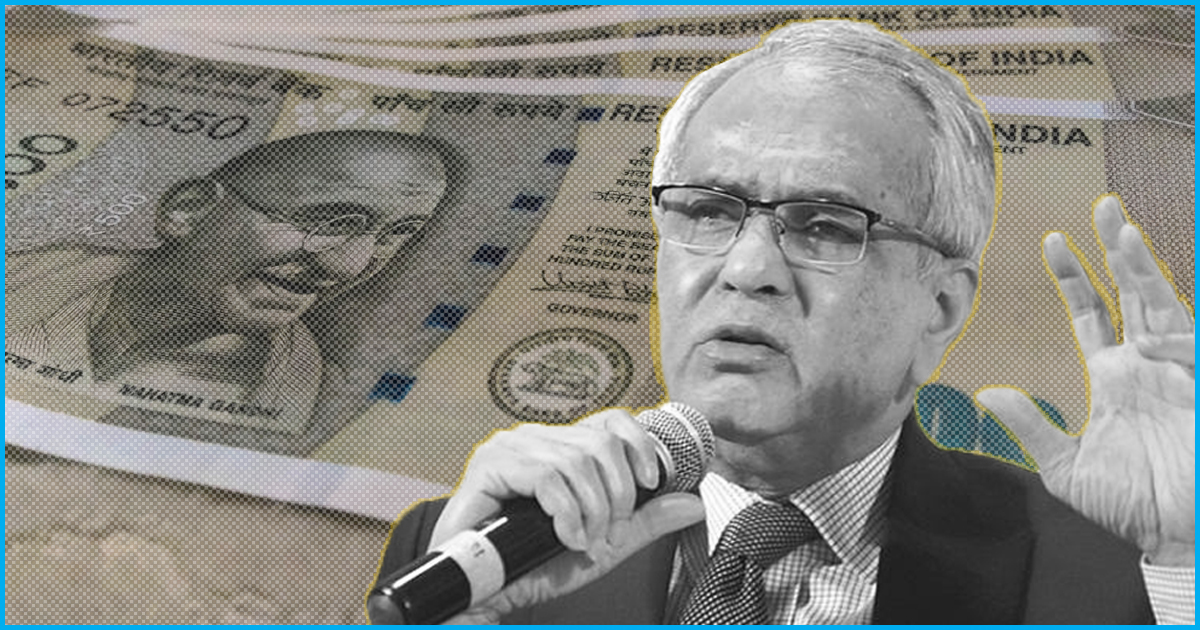
Let Rupee Find Its Own Value, Says Niti Aayog Vice Chairman After The Currency Hits Lifetime Low
29 Aug 2018 7:14 AM GMT
Even as the Indian rupee hit a new lifetime low of 70.16 on August 27, the vice-chairman of Niti Aayog Rajiv Kumar has claimed that the rupee should be allowed to find its “natural level” and that the calls for a stronger rupee are falsified beliefs. He also said that the rupee will become stronger only when the per capita income of the country goes from Rs 2,000 to Rs 5,000. Kumar believes this will happen only when every youth in the country gets a good job.
Rupee has now become the worst performing major currency among the other emerging market currencies by losing over 9 per cent year-to-date, as reported by the Times Of India.
“Allow the rupee to depreciate to find its fair value”
During an inaugural event in Shirdi, Mr Kumar said that people needed to stop judging a country’s economy on the basis of the strength of its currency. He said that if the rupee value appreciates, it would make our goods uncompetitive in international markets thereby negatively affecting all the jobs in the export sector.
Expensive electricity and other high input costs in our country increase the total input costs for the export industry. As stated by the vice chairman, the only way to allow our country to adopt to such problems is to simply let the currency find its fair value, as has been the case in many other countries.
Import vs Export
As explained by The Economic Times, a weak rupee means people have to pay more to get their imports, which also leads to a rise our chief import, which is oil. This, in turn, increases transportation costs, leading to the prices of commodities like vegetables and groceries to go up as well. Also, travelling to foreign countries for education and tourism becomes more expensive too, which keeps a check on the rich from travelling too much.
The export-based industry, however, actually benefits from a weak rupee as people get more money for their exports- as is the case in major information technology companies and pharmaceuticals whose revenue is dependent on foreign markets.
Mr Kumar recently also highlighted his worry regarding the rising trade deficit, saying that it was more concerning than the falling rupee, and asked for more efforts to be put into place to support the export industry. “We must shift debate out of fiscal deficit. Countries like the US, China and the European Union don’t give (importance) to it… We need to move from that single, one number (fiscal deficit),” said Rajiv Kumar, as reported by The Times of India.
The rise or fall of a currency against it competitors depends on its demand in the global market against other currencies, which means it depends on the exchange rate between two countries and the ratio of their nominal interest rates.
Reportedly, a sharp surge in imports in July led to India’s trade deficit becoming worse, reaching a five year high of $ 18.02 billion. According to Kumar, with our per capita income still so low, it will be better if we just focus on exports rather than attempting to negotiate big trade deals.
Was The Depreciation Of Rupee Inevitable?
Former vice chairman of Niti Aayog and currently a professor of economics at the University of Columbia, Arvind Panagariya claims that the fall in rupee value was long overdue, as the appreciated value had been harming the country’s exports. He further stated that the macroeconomic management of the country by the RBI was in good hands after the RBI managed the increase in the exchange rate by using our foreign exchange reserves prudently.
Rajiv Kumar has stated that the Niti Aayog is going to reveal the development agenda for ‘New India 2022’ very soon. His vision is for the Planning departments of the states to start working as State Niti Aayog.
Also Read: TLI Explains: India’s Inflation At 5.77%, A Four Year High
 All section
All section













